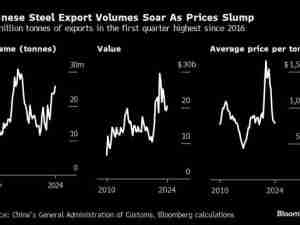When China Sneezes These Countries Will Be First to Feel a Chill
By: Bloomberg News | Aug 04 2016 at 05:00 PM | International Trade
By: Bloomberg News | Aug 04 2016 at 05:00 PM | International Trade


The Office of the United States Trade Representative (USTR) today announced that Katherine White will serve as USTR’s Chief Textiles and Apparel Negotiator. White previously served as International Trade Policy…
View ArticleIran and Pakistan took steps to repair relations after deadly military strikes by the two Asian neighbors early this year, with both countries signing multiple agreements on security and economic…
View ArticleThe UK will enforce “light-touch” post-Brexit checks on food and plant products beginning later this month to avoid disrupting businesses trading with European Union nations, a government minister said.
View ArticleThe European Union is assessing potential sanctions against more than a dozen companies that have continued to buy restricted goods from the bloc and supply them to Russia, according to…
View Article© Copyright 1999–2024 American Journal of Transportation. All Rights Reserved